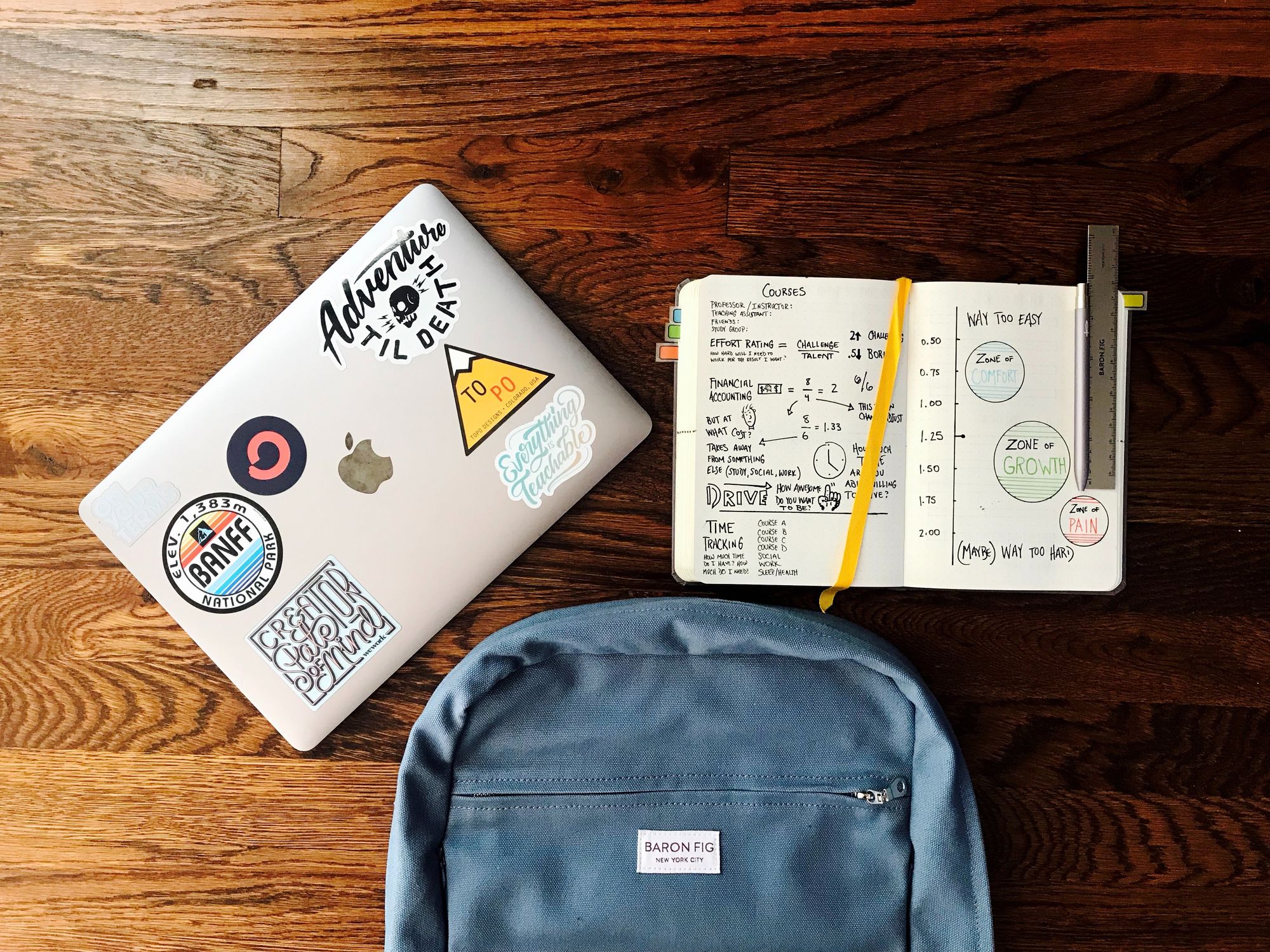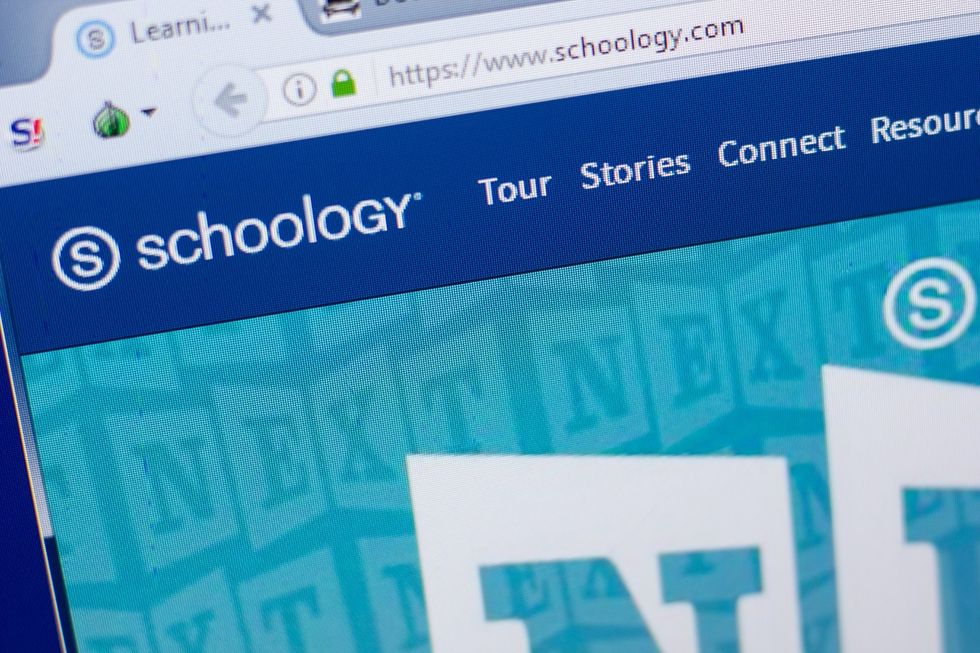'Less Towers, More People': How Limited WiFi Access Could Wreak Havoc on LAUSD's Remote School Year
Francesca Billington is a freelance reporter. Prior to that, she was a general assignment reporter for dot.LA and has also reported for KCRW, the Santa Monica Daily Press and local publications in New Jersey. She graduated from Princeton in 2019 with a degree in anthropology.

All five of Adriana Ruiz's kids start school Tuesday, but she still doesn't know if all of them will even attend their virtual classes. Her kids, ages 10 through 16, all have district-issued laptops they were given their second week into remote learning in March, but the WiFi at her apartment in Cudahy is spotty and can't support five streaming devices for hours on end.
Last week, after picking up their books, Ruiz requested an internet hotspot. She's still on the waiting list.
In addition, Ruiz is worried that she'll need to help her children through their lessons, though she hasn't been trained on the district's teaching platforms.
She's not alone. Across the city, anxiety is rising as parents and children face a new type of school year. Parents have become both the district's IT team and teachers' aides. Advocates worry that low-income students without access to a quiet place to work and stable internet access will suffer most. And there's also concern about keeping school-age children's attention focused on a screen.
Despite months of preparation, LAUSD, the nation's second largest school district, still can't account for some basic connectivity issues. The district, which has partnered with several internet carriers, has no way of determining how many of its 600,000 students have access to WiFi, LAUSD spokesperson Barbara Jones told dot.LA.
Hannah Gravette from Innovate Public Schools, a Bay Area nonprofit that began working with public school parents in L.A. two years ago, said some parents aren't getting internet despite district promises because of unpaid bills. Some undocumented families were also uncomfortable with the information providers were requesting of them.
"In many of L.A.'s dense, urban-core communities, there are already equity issues with bandwidth. Less towers, more people," Gravette said. "So already there was spotty or poor connectivity."
There's a disconnect between what LAUSD is providing and whether parents feel prepared. At the same time, there's little the district can do to forecast what online learning will look like for many children.
Earlier this month, the California Department of Education was scrambling to provide resources for about 1 million students who didn't have the technology needed for remote learning.
When schools first shut down in March, LAUSD announced a $100 million initiative to provide every student with a laptop and internet hotspot. Superintendent Austin Beutner marked the issue nearly "solved" in early May during a weekly video update.
But it wasn't.
Many families still didn't have laptops. And Beutner has said that the first few days of school — the days most students remember for awkward introductions and first impressions — will be used for orientation, training and to hand out laptops and hotspots.

For those families still without tech access, the district has set up a hotline. But getting the message out has been difficult, a reflection of the uneven communication in a district trying to reach busy parents.
Jenny Hontz, who works at the L.A. nonprofit Speak Up, an advocacy organization that represents over 4,000 parents across the city, said several families she has spoken with didn't even know there was a help number to call. Instead they were calling their local schools, which were closed. Desperate parents were leaving messages on voicemails that weren't always picked up.
L.A. Unified School District has over 1,000 schools and 200 independently-run charter schools. With about 80% of students qualifying for free or reduced lunch, many of the students come from households struggling financially.
"I believe that the effort was made. Principals went into students' homes to give screen devices, etc. It doesn't necessarily mean 100% of them got it," Pedro Noguera, dean of USC's school of education told dot.LA.
"How effectively they addressed the need remains to be seen. We know there are a lot of kids that, even if they had access, were not online, were not doing their work. We don't know why."
LAUSD's own survey shows that class participation this spring was disproportionately low for Latino and Black students, students classified as English learners, students with disabilities and students in foster care or experiencing homelessness.
A report from an over two-month period this spring covering secondary students showed only 60% of the district's middle and high school students were active each day on Schoology, the online course management system downloaded onto district-loaned devices. At the time, when it was unclear how long the pandemic would keep schools closed, students' participation wasn't required, so it's difficult to tell how much of this will predict the system's use in the fall.
"We've learned a good deal about online education since March and it's clear there is a need for more one-on-one support for students," Beutner said in an update last week. "The individual attention a teacher can provide to a student in a classroom at a school is not easily replicated in a Zoom class with 20 or 30 students."
He said the district will offer in-person and online tutoring for students who need it, an initiative with the new nonprofit Step Up Tutoring.
Meanwhile, the district has purchased some 200,000 computers.
But even once kids received devices, not every parent knew how to use it or log into the online school system where their kids would attend class and submit assignments.
The only official training Ruiz received on distanced-learning software was how to log in into Schoology, a platform her older children knew how to use. But this fall, her five kids might each use a different online platform because each teacher can choose their own.
Meanwhile, she's waiting for her hotspot. LAUSD's Jones told dot.LA that the school district has "been able to fulfill all requests for hotspots," but she wouldn't say whether there remained a waiting list for some.
When she is online, Ruiz will be doing what a lot of students are doing to get by — Googling it.
"It was new for us as parents," Ruiz said. "We didn't get a lot of training into navigating the different technology platforms. We had to Google and YouTube it. Just as the teachers got training, parents need training as well."
- How the Pandemic Brought Technology to LA Schools - dot.LA ›
- Long Lines at LA Schools as 'Daily Pass' Servers Crash - dot.LA ›
- LAUSD Spent Millions on Learning Apps That Felt Like a Maze - dot.LA ›
Francesca Billington is a freelance reporter. Prior to that, she was a general assignment reporter for dot.LA and has also reported for KCRW, the Santa Monica Daily Press and local publications in New Jersey. She graduated from Princeton in 2019 with a degree in anthropology.




